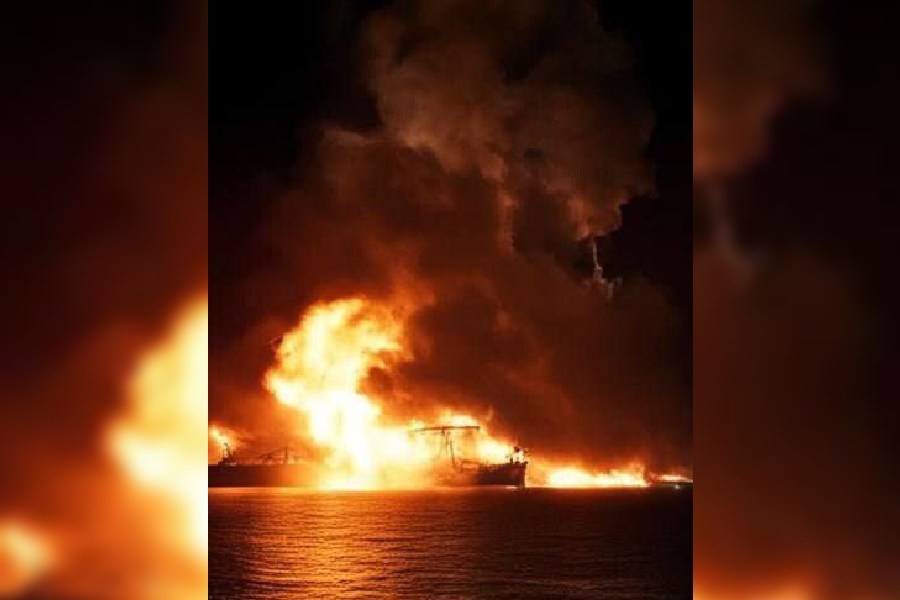The Houthi rebels have scored a direct hit on a tanker carrying Russian fuel through the Red Sea and also just missed another tanker heading to India.
Until this attack, the Houthis have avoided hitting Russian ships and also vessels carrying Russian cargoes. As a result, tankers carrying Russian oil destined for Indian ports have continued to use the shorter sea routes through the Suez Canal and the Red Sea.
Now, with this strike on the vessel carrying a Russian cargo, all bets may be off. That could lead to rising transportation costs for Russian oil coming to India. The Marlin Luanda was on fire after being hit by a Houthi missile 60 nautical miles southeast of Aden early Saturday. The ship is registered in the Marshall Islands and owned by global trading giant Trafigura.
“Until now, there has been this tacit agreement, very much brokered by the Iranians, that the Houthis don’t attack Russian or Saudi tankers,” says Viktor Katona, lead crude analyst, Kpler, a global trade intelligence firm.
“This one was operated by Trafigura. I guess that’s why they got tempted to attack,” Katona said.
The Achilles which is bringing Russian Urals grade crude to India had a narrow escape when a missile landed less than a mile away from it. The ship was still transmitting signals very early on Saturday morning, indicating that it was safe.
Around 50-55 tankers carry Urals crude come from Europe through the Red Sea to India. Another eight to 10 tankers carrying fuel oil (motor oil or heating oil) head to Jamnagar port monthly.
About 80 per cent of Russian coal coming to India also comes via the Suez Canal. Besides that, five or six tankers bringing Russian sunflower oil also comes through the Suez.
“Till now the Russians were the only suppliers who have effectively kept Suez Canal/Red Sea transits unchanged,” says Katona.
He adds: “I guess they will have to alter their strategies now. Should they do that, it would be a thing for India, considering there is some 1.5 to 1.6 million barrels per day (mbd) of Russian Urals coming from Europe through the Red Sea.
If the Russians are forced to ship their oil and other commodities on the much longer route via the Cape of Good Hope it might lead to a considerable rise in transportation costs.











